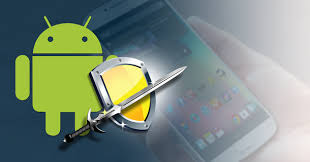10 TIPS FOR SECURING YOUR SMARTPHONE
This month is National Cyber Security Awareness Month. Each week within October will take on adifferent theme, with this week's being 'Mobile'. So, with that in mind, we thought we'd prepare some tips to help keep your smartphone safe.

Top 5 threat protection best practices
Trend Micro predicts that there may be as many as a million Android malware threats by the end of the 2014. What's going on here? Make no mistake about it, there are REAL ANDROID MALWARE PROBLEMS. (Credit: Juniper Networks) Part of it is that Android is being targeted because it's extremely popular. The research company Canalys found that Android is running on 59.5 percent of all smart mobile devices that were shipped in the first quarter of 2013.

YES, YOUR SMARTPHONE CAMERA CAN BE USED TO SPY ON YOU...
Yes, smartphone cameras can be used to spy on you - if you're not careful. A researcher claims to have written an Android app that takes photos and videos using a smartphone camera, even while the screen is turned off - a pretty handy tool for a spy or a creepy stalker.

Free Security Scans - Find threats your antivirus missed
Malware is complex, seemingly everywhere and is often difficult to stop. It knows how to find your data,even on your mobile device and Mac. You can't ignore your the safety of your devices any longer: you need to recognize and stop these threats before they do MORE harm.

MALWARE ATTACKS ON ANDROID DEVICES SEE 600% INCREASE IN 2016 / 2017
Malware targeting the Android platform is exploding, with a 600 percent increase in just the past 12 months. That statistic is among the findings of a new study--Mobile Security Threat Report--unveiled last week at the Mobile World Congress in Barcelona, Spain.

Malware Attacks Exploit Open Source MDM Software to Compromise iPhones and Apps
mobile malware Daily update ⋅ March 15, 2018
| NEWS | ||||||
Cybercriminals pivot to cryptomining, fileless malware – McAfee
McAfee said new ransomware grew 35%, and 2017 ended with a 59% growth of ransomware attacks year over year. While new mobile malware decreased by 35%, most notably in terms of Android screenlocking ransomware, the cybersecurity firm added new Mac OS malware samples increased 24% ...
| ||||||
APAC security chiefs expect imminent attack on critical systems
Cyber criminals will ramp up efforts to mine cryptocurrencies, while mobile malware will rear its ugly head across the APAC region in 2018. The computer networks of two universities in Singapore were breached in April 2017 by hackers looking to steal information related to government or research.
| ||||||
Eight new cyber threat samples emerging per second
In 2017 total mobile malware experienced a 55% increase, while new samples declined by 3%. New malware samples increased in Q4 by 32%. The total number of malware samples grew 10% in the past four quarters. 97% of spam botnet traffic in Q4 was driven by Necurs — recent purveyor of 'lonely ...
| ||||||
Asia Pacific countries are a melting pot of cyber threats
Asia Pacific (APAC) countries remain a popular melting pot for cyber threats of all kinds, including online banking malware, ransomware, malicious mobile app downloads and exploit kit attacks. APAC accounted for almost 40% of the 1.7 billion ransomware attacks between 2016-2017, according to ...
| ||||||
Cyberattacks to increase in 2018 on IoT and mobile devices: SonicWall Cyber Threat Report
Malware attacks increased from 7.87 billion in 2016 to 9.32 billion in 2017, while ransomware attacks decreased from 638 million to 184 million, according to SonicWall Cyber Threat Report. SonicWall, the cybersecurity solutions provider, revealed the findings, intelligence, analysis, and research about ...
| ||||||
Mobile Anti-Malware Market Analysis, Overview, Growth, Demand And Forecast Research Report ...
Mobile Anti-Malware Market report provides key statistics on the market status of the Mobile Anti-MalwareManufacturers and is a valuable source of guidance and direction for companies and individuals interested in the Mobile Anti-Malware Industry. The Mobile Anti-Malware industry report firstly ...
| ||||||
Mining Malware was used by Hackers for 400,00 Computers
However, the antivirus program managed to recognize all these attempts. The miner was supposed to mine Electroneum, which is a less known coin that also uses mobile mining that is app based. Malware also generated traffic that was really suspicious, and the command and control server were ...
|
10 Tips to Freshen up Your Old iPhone Instead of Buying the iPhone X

1. Disable Push Notifications

2. Take a Look at Your Hard Drive Space
3. Disable Unnecessary Location Services
4. Give It a Makeover

5. Turn off That Bullshit Background App Refresh
6. Close All Non-Essential Apps
7. Lower Your Brightness

8. Clear Your Safari Cache
9. Give It a Soft Reset
10. There’s an App for That







